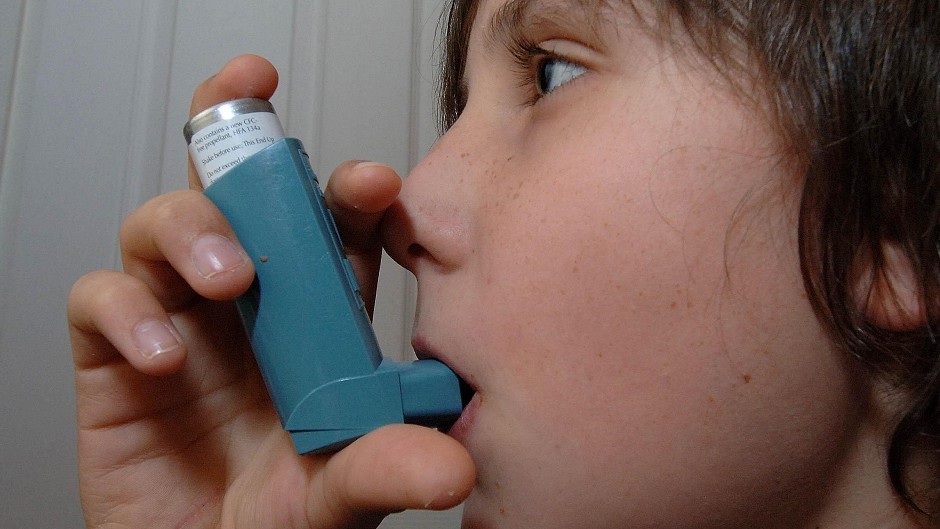Screening young asthma sufferers for a specific genetic change could lead to fewer attacks and more effective treatment, according to Aberdeen University scientists.
A study of 4,000 children with asthma revealed that those with the gene change were 50% more likely to suffer an attack when following a standard treatment plan.
Researchers say a simple test could spare young patients from “trial and error” treatment and help doctors choose which asthma medication will work best.
Asthma treatment in children is usually straightforward and involves a steroid inhaler.
However 10% of children with asthma still experience symptoms and move on to trying one of three alternative treatment options.
At present, determining which of these methods will be most effective is a matter of trial and error.
The new study, led by Dr Steve Turner, focused on children being treated with LABA – a medication which causes the muscles lining the breathing tubes to relax and widen the airway.
Around 60% of people have a change in the gene which makes the LABA work less well.
Children with the genetic change who were treated with other asthma medicines did not experience increased asthma attacks.
The study – published in The Journal of Allergy and Clinical Immunology – concludes that the presence of this genetic change made the LABA treatment less effective.
Dr Turner, senior clinical lecturer in child health at the university and honorary consultant paediatrician with NHS Grampian, said: “The question is, ‘how do we match the right children to the right treatment?’
“Our study shows that those with the gene change are more likely to suffer an attack because they are being treated with LABA, which is ineffective for them.
“So the implication of this finding is that routine testing for this very common gene may let physicians know which asthma treatment works best in children with asthma and spare them an unsuccessful ‘trial by treatment’.
“These findings now need to be properly tested in a clinical trial.”
Dr Samantha Walker, Director of Research and Policy at Asthma UK, said: “Every 10 seconds someone in the UK has a potentially life-threatening asthma attack and tragically asthma attacks kill three people every day.
“This research looks promising because if we can find a way to identify people at a greater risk of an attack and then adjust their treatment to reduce that risk then this will have a huge impact.
“It’s important to note that this research is still at an early stage and we’ll need to see how it performs in clinical trials before this is something that your own doctor will be able to do. That’s why we need more investment into asthma research so that we can understand the different types of asthma that people have, and develop treatments that work better, so we can stop life threatening asthma attacks.”










